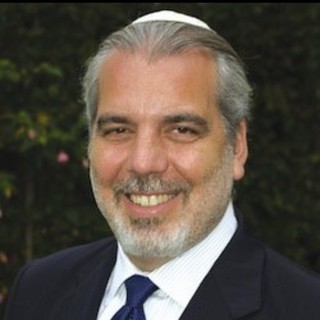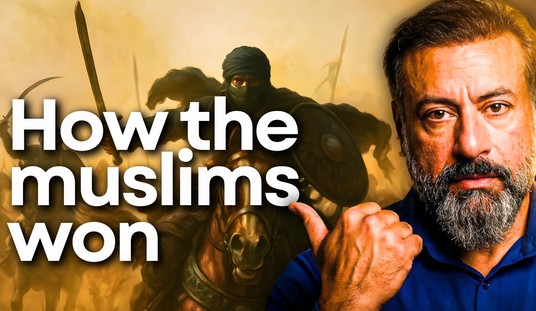Next Saturday night, Jews around the world begin the celebration of Purim (it continues throughout the next day around the world, and the day after in Israel), which includes all sorts of ritualistic practices as we publicly read the biblical Book of Esther. But today is St. Patrick’s Day, and it is a good opportunity to look at these two cultures and holidays that are filled with both fun as well as deeper, hidden meanings.
Purim is based on the story of Esther, Mordecai, Haman, and the court of Ahasuerus, the king of the Persian empire in the 5th century B.C.E. The evil minister Haman seeks to destroy the Jewish people, who are saved by God through the efforts of Mordecai and Esther. We celebrate the holiday by reading the entire Scroll of Esther, dressing in costumes, playing with groggers (loud noise makers that spin from the bottom), and most notably, getting so drunk that we cannot tell the difference between the phrase “blessed be Mordecai” and “cursed be Haman”.
St. Patrick’s Day commemorates Saint Patrick, a fifth-century Christian missionary and bishop, known as “the Apostle of Ireland." Credited with converting much of the Irish pagan population to Christianity, he was never officially canonized as he lived prior to the current laws of the Catholic Church but is venerated as a Saint in the Catholic, Anglican, Eastern Orthodox, and Lutheran Churches. Captured by pirates, he was taken from his home in Britain and sold into slavery in Ireland. He escaped slavery only to return to Ireland and convert thousands of pagans there to Christianity.
So what are the Jewish connections with this man and the holiday honoring him?
Let’s start with the food (don’t we always?). It has become traditional to eat corned beef and cabbage on this holiday. The cabbage makes sense as it was the cheapest vegetable the new Irish immigrants could afford. But the corned beef is actually because of kosher butchers. In Ireland, most people ate salted pork, but bacon was too expensive in America. On the Lower East Side of New York, where many Irish immigrants came and Jewish immigrants already resided, the new Irish Americans found a meat from the front of the cow called brisket. The kosher butchers catered to a poor Jewish population, and the Irish found that this brisket, when salted and slow-cooked with potatoes, made a delicious and filling meal. Thanks to the kosher butchers of the 19th century, thousands of pubs today serve this famous “Irish” dish.
There are many similarities and overlapping between the Jewish and Irish cultures. Both spoken languages of Gaelic and Yiddish were supplanted by English, and both traditional languages have become almost lost. Irish folk music and klezmer are nearly identical musically (they have different rhythms), and the great Irish singer Susan McKeown has recorded with the Grammy-winning band The Klezmatics, whose violinist Lisa Gutkin started her career as an Irish fiddler.
William Annyes, a Jew, was a mayor in Cork County way back in 1555 (although Dublin did not have a Jewish mayor until Robert Briscoe in 1956). There are so many parallels between the cultures that Thomas Cahill, the former Director of Religious Publishing at Doubleday, credits the development of Western civilization to these two cultures. (I highly recommend both his books “How the Irish Saved Civilization” and “The Gifts of the Jews: How a Tribe of Desert Nomads Changed the Way Everyone Thinks and Feels.”)
While it is typical to get drunk on St. Patrick’s Day, it is not a religious obligation, nor does it have the same meaning as the drunkenness of Purim. Scholars agree that the first example of this behavior was probably at a St. Patrick’s Day parade in Boston in 1737, which was duplicated in New York 25 years later. As Patrick died on March 17, this memorial to him occurs in the middle of Lent, when Catholics are forbidden from imbibing alcohol. This “feast” day celebrating Patrick became a one-day reprieve from the austerity of Lent, and like Mardi Gras and Fat Tuesday became a day of excess in contradiction to the Lent prohibitions.
While Purim celebrates the miracle of deliverance from Haman’s proposed slaughtering of the Jews, St. Patrick’s Day commemorates the miracles attributed to Patrick. The great miracle he accomplished was turning pagans towards a worship of God and Jesus. But he is also credited with driving all snakes off the island of Ireland. (Most scholars agree that there were probably no snakes in Ireland by Patrick’s time, but folk myths still give him the credit.) Both holidays revolve around people being saved: the Irish from paganism (and possibly snakes), and the Jews from institutionalized slaughter.
It is insightful to recognize how both Purim and St. Patrick’s Day incorporate simple symbols to convey deeper teachings. The excess of Purim is to remind us that anyone can become excessive at any time, and we should always be cautious and conscious of that truth. It is partly because of this that we are taught in Midrash Mishlei (pre-11th century) that “all holidays will be annulled in the world to come except Purim."
Even after the Messiah comes, it will be possible to be excessive. St. Patrick’s Day’s drunkenness is also a reminder in the middle of the Lenten season to be conscious of stepping outside the appropriate boundaries. By embracing the opposite, the reveling on March 17 reminds Catholics that they need to be more solemn during Lent and appreciate the sacrifices their Savior made. In both holidays, we embrace our “shadow” (to use Jung’s terminology) in order to appreciate better what is right and righteous.
Both holidays also hide teachings in plain sight through the use of symbols. The three-leafed shamrock was used by Patrick to teach the Irish about the Holy Trinity. The three separate leaves are part of the same single leaf, and the shamrock was and still is a useful tool for understanding the theology of the Father, Son, and Holy Spirit in a simple way.
Similarly, the loud grogger noisemakers hold a hidden teaching. The miracle of Purim only occurs after the people fast and pray: it is our effort that sparks God to save us. The grogger’s handle is on the bottom. It is a reminder that the effort must come from below in order for God above to deliver us. (This is in contradiction to the dreidel of Hanukkah, a toy which is spun from the top as the miracle of Hanukkah was prompted not through our efforts but through God’s grace.)
But at the root of both holidays is the teaching that God has and always will bless us with miracles. Even when things seem dark and hopeless, God can and will always redeem us from evil. Even in the darkness of external attacks from the evils of Hamas and the internal attacks from U.S. politicians who are more concerned with getting votes in Michigan than with defending righteousness, the examples of St. Patrick and Purim remind us to choose faith in God, and know that faith and action will lead to success against all evil.
There is a modern Purim story that illustrates this lesson. Joseph Stalin had murdered 20 million of his own people, and after the war in 1947 took his hatred for Jews to a more aggressive stance. He started targeting Jewish leaders and had plans to kill the 2-4 million Jews left in Russia. In 2003 documents were discovered that proved Stalin had commissioned four concentration camps to be built in Siberia and the Arctic north for the Jews. The expulsion would take place on March 6, just a few days after Purim which was March 1 of that year.
On Purim, Rabbi Yitzhak Zilber read the Scroll of Esther with the other Jews with him in Siberia. Another prisoner present attacked the Rabbi. “Where is your God now?” he asked. “Hitler finished six million of us and here they are about to be done with another three. Do you not see the trains and barracks that have already been built for this purpose?” Rabbi Zilber responded, “True, our situation is difficult, but don’t be so quick to eulogize us. Haman also sent orders to 127 provinces. God will yet help. Stalin is a mere mortal… no one can know what will be with him in a half hour.”
That night, just thirty minutes after Rabbi Zilber spoke his words, Joseph Stalin collapsed in a stroke, which led to his death on March 5. The Russian Jews had been saved from a Haman who wished to destroy them.
This is the real essence of both holidays of Purim and St. Patrick’s Day. God has saved the lives and souls of the faithful for thousands of years. 2,500 years ago in ancient Persia He saved Jewish lives, 1,500 years ago in Ireland he saved pagan souls, and again over 75 years ago he saved the Russian Jews.
And God will save both Israel and our nation from the threats of evil without and within.
As we look at the many challenges facing the world today from the war in Israel to economic to political to social to the threats of nuclear war, God forbid, we need to remind ourselves that “everything is in the hands of heaven except the awe of heaven” (Talmud, Berachot 33b). God has saved us, and always will.
So have a green beer (or juice drink if you don’t imbibe alcohol) with an Irishman and a Jew (or even somebody who just likes Notre Dame football), and share the stories of Patrick and Purim together. Make the noise of a grogger and contemplate the beauty of a shamrock. And in doing so, may we all embrace the blessings of God, act right and righteously, and deepen our faith in knowing that as God has redeemed our ancestors, He will again redeem this world in our time.
Happy Purim, St. Patrick’s Day, and may we all be blessed to receive God’s blessings of good health, prosperity, wisdom, joy, love, and peace.










Join the conversation as a VIP Member